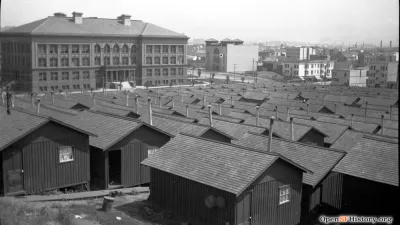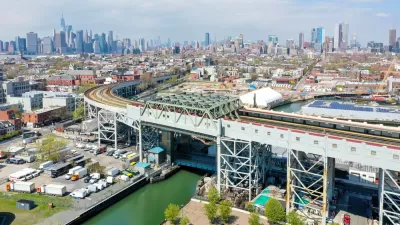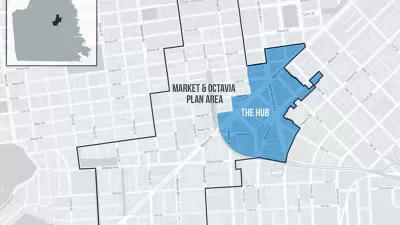Unlike the 1970s and 80s, when a building boom created a vocal backlash, S.F.'s current surge in development hasn't galvanized a concerted no-build movement. If gentrification is driven by demand 'from the bottom up,' does that mean it's desirable?
Columnist C.W. Nevius examines why San Francisco's current building boom is happening "with surprisingly little grumbling.
Gentrification, he explains, became a dirty word during the "Manhattanization" of the city in the 1970s and 80s. "The difference this time is that the push is coming from the bottom up," he contends. "Rather than fat-cat developers promoting ugly skyscrapers, the demand is coming from young techies who work here or in the Silicon Valley and want to preserve the feel of unique neighborhoods. Their presence is being felt not only in the Mission, where Facebook founder Mark Zuckerberg now has a home, also in areas that were once considered downtrodden."
"This boom has its share of concerned activists," says Nevius, "but we have yet to see the stop-any-kind-of-development movement we saw in the '80s."
"But," counters Nevius, "those changes are largely happening in neighborhoods that have made the progression from urban blight to uber-hot."
Or, perhaps after several decades of trendy restaurant openings and "[r]unaway rental and housing rates," there's just not many people left to displace.
FULL STORY: Gentrification no longer a dirty word

Alabama: Trump Terminates Settlements for Black Communities Harmed By Raw Sewage
Trump deemed the landmark civil rights agreement “illegal DEI and environmental justice policy.”

Planetizen Federal Action Tracker
A weekly monitor of how Trump’s orders and actions are impacting planners and planning in America.

The 120 Year Old Tiny Home Villages That Sheltered San Francisco’s Earthquake Refugees
More than a century ago, San Francisco mobilized to house thousands of residents displaced by the 1906 earthquake. Could their strategy offer a model for the present?

Opinion: California’s SB 79 Would Improve Housing Affordability and Transit Access
A proposed bill would legalize transit-oriented development statewide.

Record Temperatures Prompt Push for Environmental Justice Bills
Nevada legislators are proposing laws that would mandate heat mitigation measures to protect residents from the impacts of extreme heat.

Downtown Pittsburgh Set to Gain 1,300 New Housing Units
Pittsburgh’s office buildings, many of which date back to the early 20th century, are prime candidates for conversion to housing.
Urban Design for Planners 1: Software Tools
This six-course series explores essential urban design concepts using open source software and equips planners with the tools they need to participate fully in the urban design process.
Planning for Universal Design
Learn the tools for implementing Universal Design in planning regulations.
Clanton & Associates, Inc.
Jessamine County Fiscal Court
Institute for Housing and Urban Development Studies (IHS)
City of Grandview
Harvard GSD Executive Education
Toledo-Lucas County Plan Commissions
Salt Lake City
NYU Wagner Graduate School of Public Service





























